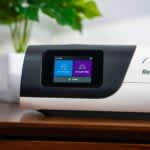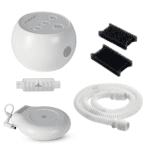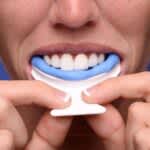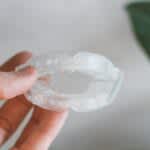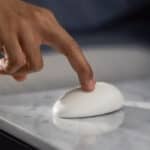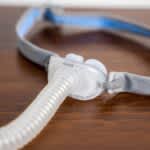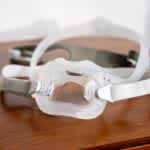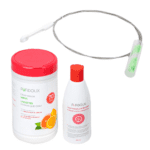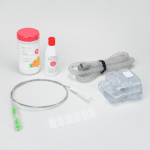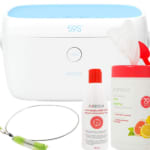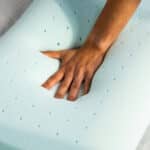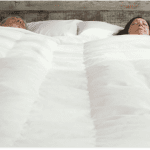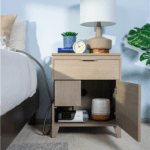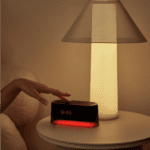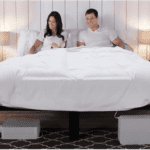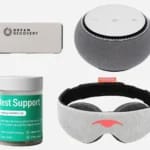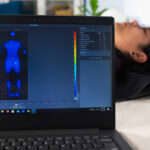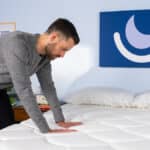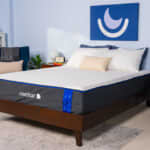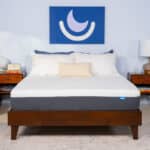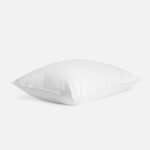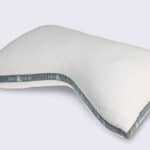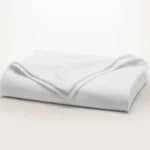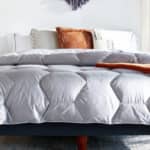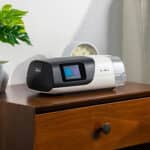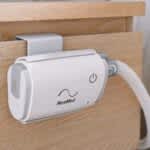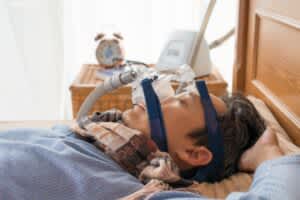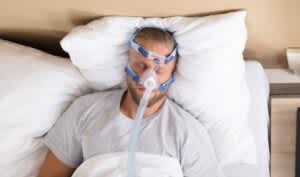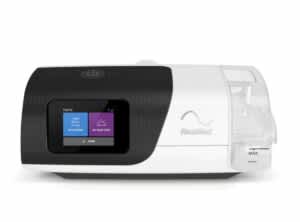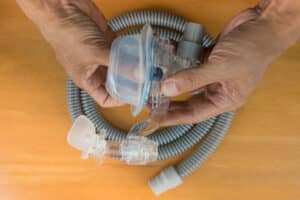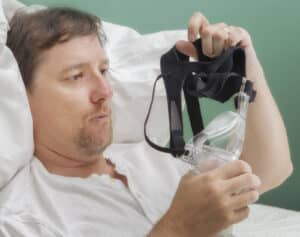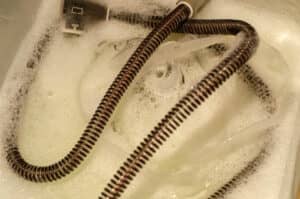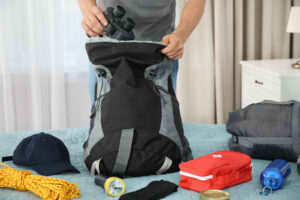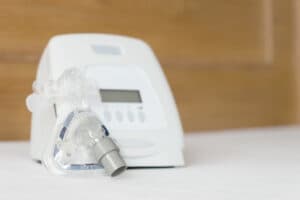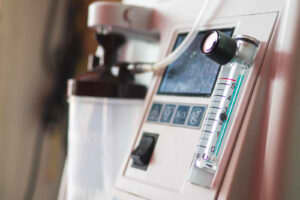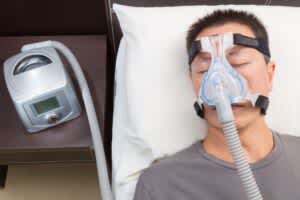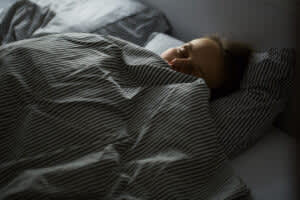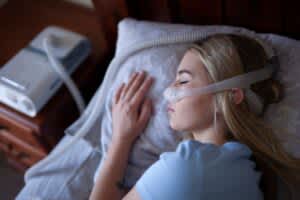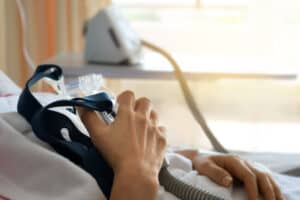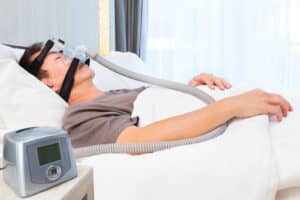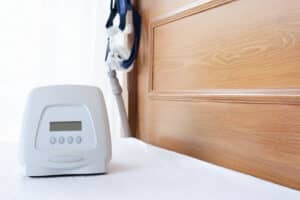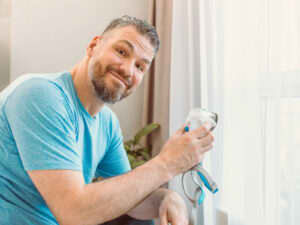Continuous positive air pressure (CPAP) machines are the most common treatment for obstructive sleep apnea (OSA). They pump filtered, pressurized air from the device through a hose and into a mask worn around your nose and/or mouth. The flow of air from the CPAP keeps your windpipe open during sleep.
CPAP therapy can reduce or eliminate symptoms of OSA, including snoring and daytime drowsiness. If you have OSA, using a CPAP machine can help you get better rest, lower your blood pressure, and enjoy better overall health.
However, getting accustomed to using a CPAP can be challenging and you may feel uncomfortable or find it hard to sleep at first. A step-by-step look at the process of setting up and using a CPAP machine can ease your transition so that you can experience all the benefits of successful OSA treatment.
CPAP Instructions for Use
While there are basic instructions that apply to most CPAP machines, every device is slightly different. Your CPAP machine may come with specialized instructions or features that are not covered in this guide. Always check the user manual, and if you are having trouble setting up or operating a CPAP machine, contact your doctor for help.
Using a CPAP machine can be uncomfortable at first, and it may take a while to adjust to the way it feels. Despite this, it is usually best to try to keep using the CPAP throughout the night because this can speed up how quickly you get accustomed to it.
Place the CPAP Nearby
Keeping your machine close to the bed provides easy access and gives you plenty of room to adjust your sleeping position without pulling too hard on the hose. If the device is too far from your bed, you may not be able to move freely or reach the device to adjust the settings.
Place the CPAP machine on a strong, stable surface to prevent it from rattling or wobbling.
Insert the Filter
CPAP machines use a filter that purifies the pressurized air. The type of filter varies based on the model of machine. The original filter should be clean and ready to use as soon as it is inserted for the first time.
Later, it is important to clean or replace the filter on a regular basis so that the CPAP machine runs optimally and keeps you from inhaling contaminated air. Instructions for how often to change the filter should be available in the CPAP device’s user manual.
Connect the Hose and Mask
Attach the hose to the device on one end and the mask on the other. Be sure that the components are firmly connected to prevent air from leaking out.
Set Up Any Attached Humidifier
Some CPAP machines come with a humidifier to keep the pressurized air moist and prevent your nose and throat from becoming dry.
Add water to the humidifier’s reservoir, but make sure not to go above the “Max Fill” line. The CPAP manufacturer or your doctor may recommend that you only use distilled water in the humidifier.
Depending on the capacity of the reservoir, you may want to have a backup bottle of water nearby in case you need to add water during the night.
Plug It In
Attach the power cord to the device, if necessary, and plug it into a nearby outlet.
Adjust the Mask
Typically, the doctor who prescribes your CPAP machine will also help you select a mask. A mask should fit securely on your face to create a seal with your nose or mouth so that air cannot escape. It should be snug but not too tight, and straps usually help hold it in place.
CPAP masks come in a variety of styles and sizes. Some cover just the nose or mouth, while others cover the nose and mouth or the entire face. A nasal pillow mask sits just below the nostrils, creating a seal without the need for covering the nose or face. Different shapes and cushions are also available.
When choosing a mask, communicate with your doctor about your preferences and concerns. For example, if you dislike feeling closed in, a nasal pillow mask may be an option if you don’t need high levels of air pressure. If you tend to breathe through your mouth at night, you might try a mask that covers both your nose and mouth. A chin strap can also keep your mouth closed while using a nasal mask.
Try It Out
Once your CPAP machine is assembled and your mask is in place, you can turn the device on and try it out. Your doctor will have already determined which pressure setting you should use, so you do not need to adjust the settings.
Some machines let you gradually ramp up the pressure to the prescribed level as you fall asleep. For some people, this ramp setting makes it easier to get to sleep while wearing the CPAP.
You should not feel air leaking from your mask while using a CPAP machine. If your mask is letting air out, adjust it so that it fits more snugly against your face.
Let your health care provider know if the pressure level is uncomfortable, if the mask or other aspects of using the CPAP are bothersome, or if your CPAP does not seem to be helping your symptoms.
Tips for Adjusting to Your New CPAP Machine
Getting used to your CPAP machine might take some time. At first, you may feel overwhelmed by the idea of using a CPAP machine every night. But with practice and regular use, the device will become part of your nightly routine and can help you wake up feeling refreshed.
In the meantime, the following tips can help you adjust to your CPAP machine and get better sleep.
- Choose the right mask: Work with your doctor to find a mask that is comfortable. Look for lightweight, cushioned options that fit correctly. It is normal for there to be a process of trial-and-error to find the right mask, so don’t worry if the first ones you try don’t quite work.
- Practice during the day: Try wearing your mask for short periods during the day, such as while you read, watch TV, or do something else relaxing. This can help you get accustomed to the feeling of the mask.
- Keep your nasal passages moist and clear: Look for a CPAP machine with a built-in heated humidifier. Saline nasal sprays or prescription medications may also help with congestion. It may help to increase the humidity in your home.
- Maximize your comfort: Test several sleeping positions ahead of time to find a comfortable position that works for you. Maintain a regular bedtime routine and do something calming before you lay down to sleep. If you have trouble falling asleep, talk to your doctor.
- Limit noise: If the noise from the CPAP bothers you, you can try placing the device under your bed. Keeping the CPAP device clean may also reduce how much noise it makes. Let your health care provider know if your CPAP machine seems unusually noisy or damaged in some way.
Problems to Look Out For
Keeping comfortable allows you to get the most out of CPAP therapy. Although people often experience difficulty when they first begin using a CPAP machine, many problems are easy to prevent or fix. Some potential side effects of CPAP therapy include:
- Red, dry, or irritated skin around the mask
- A stuffy or runny nose
- Dry mouth
- Brief pain affecting the chest muscle
- Irritated eyes
It may be tempting to stop using your machine if you have side effects. However, it is important to follow your doctor’s instructions and stick to your treatment plan. If you are experiencing problems, contact your doctor. They can offer tips or solutions to help you use your CPAP machine correctly and comfortably.
For example, you should let your health care provider know if your air pressure level is uncomfortably high. They may suggest different approaches to acclimating to the pressure, and if that doesn’t work, they can determine whether to adjust the settings or try a different kind of device.
You should also tell your doctor if you experience anxiety, claustrophobia, discomfort, or air leaks while wearing a mask. They can help identify a type or model of mask that will work best for your needs and preferences.
References
The Sleep Doctor Forum: Real Experiences, Real Connections
Continue the discussion on the Sleep Doctor Forum. Connect with experts and fellow forum members on CPAP, sleep apnea, and all things sleep. A priceless resource that’s free to join.

